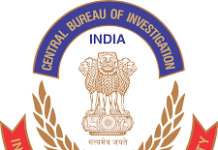
Central Pollution Control Board (CPCB) monitors water Quality of aquatic resources at 4484 locations in 28 States and 7 Union Territories spread over the country including 2108 locations on Rivers, 713 on stagnant water bodies (Lakes, Ponds and Tanks), 64 on Creeks/marine, 1235 on Wells and 364 on other water bodies (drains, canals, WTPs/STPs) in association with State Pollution Control Boards/Committees.
Based on analysis of water quality data of 603 rivers on 1920 locations for the years 2019 and 2021, CPCB in year 2022, has identified 311 polluted river stretches on 279 rivers in 30 States/ UTs in the country based on indicator of organic pollution i.e. Biochemical Oxygen Demand (BOD) (3mg/L).
Key findings of assessment were:
- 1103 out of 1920 locations (57%) were complying with BOD criteria
- All locations monitored on 324 rivers complying with BOD criteria
- 817 river locations on 279 rivers were exceeding BOD level of 3 mg/L
Comparative evaluation of present assessment with the previous assessment carried out by CPCB indicates that there is decrease in number of polluted river stretches from 351 (year 2018) to 311 (year 2022).
Further, Improvement in water quality has been observed in 180 out of 351 PRS identified during year 2018. Out of 180 PRS, 106 river stretches have come out of the list of polluted stretches and remaining 74 has been shifted to lower priority class.
Assessment of water quality over the years revealed that in the year 2015, 70% of rivers monitored (275 out of 390) were identified as polluted whereas, in the year 2022, only 46% of rivers monitored (279 out of 603) are identified as polluted.
The Ministry of Environment, Forest & Climate Change (MoEF&CC) has recently released the Detailed Project Reports (DPR) for Rejuvenation of 13 Major Rivers namely Sutlej, Beas, Ravi, Chenab, Jhelum, Luni, Yamuna, Mahanadi, Brahmaputra, Narmada, Godavari, Krishna and Cauvery through Forestry interventions prepared by Indian Council of Forestry, Research and Education (ICFRE), Dehradun.
The programme interventions include tree plantation, soil and moisture conservation works in the catchment area and river front development to increase green cover and carbon sink, reduce silt load & flooding and enhance ground water recharge etc., besides generating employment.
The interventions proposed in these thirteen DPRs is under 4 major components viz (a) Implementation of Forestry Interventions, (b) Strengthening Knowledge Management and National Capacity Development, (c) Maintenance Phase including Scaling Up and Replication of Successful Models, and (d) National Coordination for Forestry Interventions and River Conservation.
Further, MoEF&CC is currently implementing a centrally sponsored scheme namely, National Plan for Conservation of Aquatic Ecosystems (NPCA) for conservation and management of wetlands in the country on cost sharing basis between Central Government and respective State/UT Governments.
The scheme aims at holistic conservation and restoration of wetlands for achieving the desired water quality enhancement, besides improvement in biodiversity and ecosystems.
It aims to promote mainstreaming of wetlands in developmental programming with States by supporting formulation and implementation of integrated management plans, capacity development and research.
Various activities covered are interception, diversion and treatment of wastewater, shoreline protection, lake front development, in-situ cleaning i.e. de-silting & de-weeding, storm water management, bioremediation, catchment area treatment, lake beautification, survey & demarcation, bio-fencing, fisheries development, weed control, biodiversity conservation education and awareness creation and community participation.
This information was given by Union Minister of State for Environment, Forest and Climate Change Ashwini Kumar Choubey in a written reply in the Rajya Sabha.






